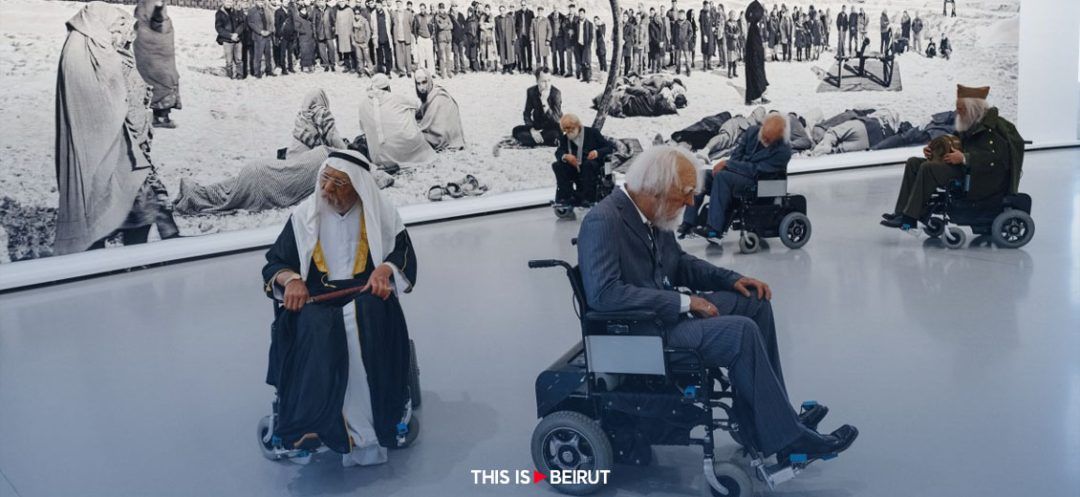
©Photo by Dimitar Dilkoff/AFP
The Bourse de Commerce in Paris unveils its new exhibition, Le monde comme il va — The World As It Goes, a striking reflection of our troubled times. Dive into the destabilizing and poetic universe of the Pinault collection.
Exploring François Pinault’s collection, boasting over 10,000 works displayed at the Bourse in Paris, leaves a lasting impression.
Right from the entrance, the tone is set with a spectacular and unsettling installation by the Chinese artist duo Sun Yuan and Peng Yu. Thirteen hyperrealistic sculptures of elderly individuals in automated wheelchairs perform a macabre choreography, evoking figures of power who have lost control. It’s a chilling observation that eerily resonates with current events.
But the assembled works do more than depict a grim picture of our world; they also uncover its hidden poetry and beauty. This is evident in the immense colorful painting by German Sigmar Polke, depicting an unstable yet miraculously balanced circus scene, and the enchanting mirror installation by South Korean Kimsooja, which transforms the central rotunda into a kind of “world upside down,” inviting visitors to become conscious of their existence in the world.
[gallery size="large" link="none" ids="236191,236192,236194"]
Indeed, the exhibition’s challenge is to prompt us to view our era through a new lens, through the eyes of artists who alternately act as “whistleblowers, prophets, visionaries, philosophers, sometimes cynical and ironic, often poets and enchanters,” in the words of curator Jean-Marie Gallais.
Many have joined, from renowned figures in contemporary art to emerging talents. The mischievous Maurizio Cattelan with his stuffed pigeons, now mascots of the place, stands alongside a troubling sculpture of a kneeling Hitler. Jeff Koons, with his unabashed kitsch in the gleaming Balloon Dog (Magenta). Or Cindy Sherman, who continues to sharply explore the question of female identity.
Yet, the exhibition also introduces the distinct views of lesser-known artists to the broader public, like Iraqi Mohammed Sami, German Anne Imhof, French Pol Taburet, or Pakistani Salman Toor. Their visions enrich the journey and attest to the Pinault collection’s international scope.
As visitors move through the exhibition, the works resonate on multiple levels, questioning our relationship to reality, power, and appearances. Damien Hirst’s clinical medicine cabinet, The Fragile Truth, probes the fragility of our certainties. And Doris Salcedo’s striking Tabula Rasa, a table shattered then meticulously reassembled, serves as a metaphor for unspeakable violence.
The exhibition also honors avant-garde luminaries, as shown by Elaine Sturtevant’s recreation of Marcel Duchamp’s famous 1938 installation, with its 1,200 coal sacks defying gravity. This nod to art history complements François Pinault’s commitment to enriching Parisian heritage.
Beyond the individual strength of the works presented, it’s the coherence and boldness of the Bourse de Commerce project that stand out. In just a few exhibitions, it has become a benchmark, challenging traditional museum norms to offer an experience that is both rigorous and accessible.
With Le monde comme il va — The World As It Goes, the Bourse de Commerce unquestionably sets a new standard. Instead of conveying a single message, the exhibition fosters a stimulating ambiguity, inviting each visitor to carve out their own path between poetry and politics, dreaminess and clarity. An experience that resonates long after the visit.
Read more



Comments